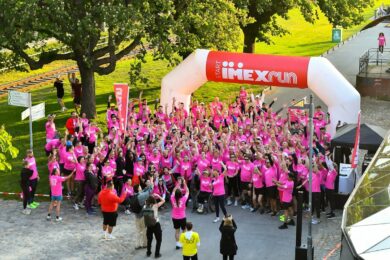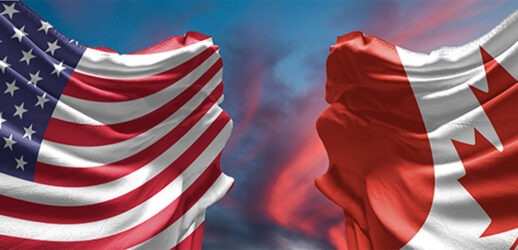Tips for making them an asset in the workplace
Today’s worker population has evolved into a complex mix of old-school values, time-honored rules, new cultural touchstones, digital habits and varied viewpoints that challenge traditional work habits and workspaces.
During the past few years, however, the work habits and communication styles of younger generations often have been viewed critically by those of older generations. It is likely that many of these critics have not adapted to the new reality of a vibrant, diverse workforce that reflects our changing society.
Plenty of discussion has taken place and many surveys have been commissioned to explore facts and myths surrounding generational characteristics and differences in our workplace population.
As we delve into this subject, it’s important to not lump everyone into a specific generational silo. Just like previous generations, today’s workforce is made up of people with different work methods, perspectives and habits, and employers should resist making stereotypical assumptions about individual employees based solely on their age.
A Quick Primer on Workforce Generations
Sometimes, we use phrases or words that we don’t fully understand. When we use terms such as “Gen X” or “baby boomer,” it helps to have a reasonable idea of their actual definition. Demographers coined these generational monikers (which are primarily used in work done by market researchers), but they have also become common expressions in our day-to-day language as descriptors of generational groups. These phrases, which identify age groups in our society, are useful when discussing the entire spectrum of population units and are widely (but not universally) accepted by demographers and market researchers.
For all intents and purposes, there are four dominant generations currently in the workforce (though workers older than 74—”The Silent Generation”—who are still collecting a paycheck may protest being excluded). They are:
Understanding Generational Work Behaviors
Trying to understand the different work behaviors of multiple generations may be useful, especially when there is a significant age gap between an employee and his or her manager. It’s important to note, however, that a significant difference in age does not necessarily lead to a significant difference in work style.
In a study conducted by Harris Interactive, managers and workers ages 25–34 were compared with managers and workers age 55 and older. Similarities and differences were found between the two groups. One interesting survey result is that members of both groups shared a preference for face-to-face communication (a good omen for meeting professionals) over email, phone or text.
There were also some differences. Though members of the younger age group were more likely than their older colleagues to work eight hours or less per day (64 percent vs. 58 percent) and were less likely to arrive before 8 a.m. (43 percent vs. 53 percent), younger workers were more likely than those in the older age group to work after leaving the office (69 percent vs. 62 percent).
Another element in the discussion of generational differences is the tremendous change in the past 20 years in the demographic make-up of today’s workforce. Organizations are much more diverse now than they’ve ever been. The influx of workers from different countries, ethnicities and cultures into companies of all sizes has added another layer of complexity to the interactions between older and younger workers.
Today, it is quite common to see 30-year-olds managing 50-year-olds and 65-year-olds mentoring 22-year-olds. While the principles of successful management tend to be consistent across generations, there are slight differences in work habits and views that all workers must empathize with when working with or managing someone of a much different age.
To effectively manage employees of different generations, it’s important to note what stage of life they are in. A baby boomer with grown children has different needs and motivations than a Gen Y team member with three young children or a Gen Z worker who is single and has an active social life. Talking to people about what’s important to them and where they’re coming from will help you figure out their motivations and what they need to reach their goals.
Tap into the Wisdom and Experience of Your Team
Though older employees are more likely to fall into mentor roles, the reverse can also happen if the work environment encourages collaboration. Many younger employees can be valuable tutors to older team members, particularly in technology, social media and applications.
In all organizations, there is value in pairing up people with different skill sets—regardless of age—which helps to create stronger bonds, exemplary teamwork and mentoring relationships.
When a multigenerational workforce is working in tandem, many benefits accrue:
- The team is more flexible.
- Co-workers tend to make better decisions because they have received input from multiple generational perspectives.
- The company benefits from more market share because its products or services reflect the multigenerational market.
- Employees demonstrate increased innovation and creativity.
On the flip side, when organizations have older workers who aren’t valued or are victims of ageism, their talents and experience are overlooked or wasted. In fact, their skill sets and experience enable them to be major contributors to an enterprise’s success.
Chip Conley and the ‘Modern Elder’
Author and hospitality entrepreneur Chip Conley shines a spotlight on the multigenerational workplace discussion in his book, Wisdom@Work: The Making of a Modern Elder. Part manifesto and part playbook, his tome sparks a timely conversation about ageism in the workplace, calling on us to treat age as we would other types of diversity.
In the book, Conley makes a distinction between the term “elder” and “elderly,” and inspires us to embrace wisdom as a path to growing whole—not old. He makes the case that midlife workers, who sometimes face the stigma of being “too old,” are not only relevant, but bring coveted skills and attributes such as good judgment and emotional intelligence to an organization.
He speaks from experience: When Conley was 26 years old, he founded Joie de Vivre Hospitality, a boutique hotel company, and remained as CEO for nearly 24 years. After selling Joie de Vivre in 2010, he joined Airbnb in 2013 as a part-time consultant, working with CEO and co-founder Brian Chesky to help grow the start-up company into a global hospitality brand.
It was a good match—Conley had the requisite hospitality industry experience, but lacked the digital skills of his millennial colleagues, while the young founders of Airbnb had the digital skills, but minimal experience in the hospitality world.
Conley learned along the way that though he’d been hired as a consultant and mentor, he was also in many ways like a brand-new employee, fresh out of school. In the process, he found that the secret to thriving as a midlife worker was learning to marry wisdom and experience with curiosity, a beginner’s mind and a willingness to evolve—all hallmarks of what he dubbed the “modern elder.”
Put It into Practice
In the workplace, employees of all ages should be encouraged to become more aware of the attitudes and preferences of different generations. Understanding what drives each generation can be a smart step toward professional peace, productivity and success.
Communication and compassion can help minimize any perceived generational gaps and help employees focus on their shared values and expectations. Organizations that work proactively to address the needs and differences of employees from multiple generations will reap the benefits—including improved corporate culture, higher employee engagement and morale, more effective teams and better employee retention. Those that ignore the impact of the multigenerational workforce risk losing in the competition for talent.
The overall lesson to learn is individuals from different generations think differently and make alternative choices from other generations, because what they value is not the same. Leaders need to pay attention to what is important to all employees, based on their life situation—not strictly based on their age—and the factors that motivate them to become fully engaged in their work.
Though it may seem counterintuitive, earning more money (by itself) is not always the prime motivator for most employees. Recognition, respect, a collaborative work environment and the opportunity for advancement usually score higher as motivators.
4 Ways to Better Accommodate Multiple Generations
In today’s fast-paced, ever-changing work environment, meeting and event professionals must accommodate the needs of diverse audiences representing four different generations. As the designers of meeting agendas, professional planners are at the forefront of the movement to provide balanced content and wellness offerings suitable for all attendees. These include healthy food options, flexible scheduling, creative room designs and education topics pertinent to the intellectual curiosity and needs of all participants.
Here are a few tips to consider.
Toss Out the Stereotypes: It’s easy to group people into a “type,” but don’t forget that every person attending an event is a unique individual, and age is only one attribute.
Create a Mentoring Environment: When people gather at a meeting, many of them are new, feel insecure, or are reluctant to network or participate. Help them overcome their butterflies by pairing them with others who can make them feel welcome and show them the ropes. This is a two-way street: Younger participants can mentor older counterparts, just as older peers can guide younger colleagues.
Facilitate Communication: Baby boomers may respond better to printed materials on site, while younger attendees may expect all event information and communication via apps, emails or texts. Accommodate both without killing too many trees.
Avoid “One Size Fits All” Education Sessions: In today’s new, multigenerational environment, it is imperative to offer a diverse range of topics and content that gives audience members the opportunity to plug in to sessions that are most relevant to their specific needs and situations.
A Mature Conversation
 In a conversation with Smart Meetings, Chip Conley offered insight into his desire to share his wisdom. He also discussed how to develop deeper connections in the workplace and dispelled myths about mature workers.
In a conversation with Smart Meetings, Chip Conley offered insight into his desire to share his wisdom. He also discussed how to develop deeper connections in the workplace and dispelled myths about mature workers.
You make a distinction in your book between the terms “elder” and “elderly.”
It’s time to liberate the term “elder” from the word “elderly.” “Elderly” refers solely to years lived on the planet. “Elder” refers to what one has done with those years. An elder is a master conductor and emotional meteorologist, whereas elderly is the last 15 years of your life.
You say the foundation of your code is respect. What do you mean?
At the heart of hospitality is respect. Offering service from the heart means respect everybody older. You have to move from hubris to humility. When you have humility, you can empathize more and move beyond ego, allowing you to develop a generosity of spirit.
What was your biggest takeaway from your time at Airbnb?
That you can teach an old dog new tricks.
In 2018, you founded the Modern Elder Academy (MEA). What is its purpose?
MEA is the first midlife wisdom school in the world dedicated to helping people navigate midlife. MEA is a mission-driven organization that provides scholarships to 50 percent of students, and graduates receive a certificate in Mindset Management.
What drives you?
I am incessantly curious, and curiosity leads to new opportunities and businesses.
What is one of your favorite Chip Conley quotes?
At the heart of great leadership is a curious mind, heart and spirit.
Michael J. Lyons is a professional speaker, author, actor and host of Smart Meetings TV.





